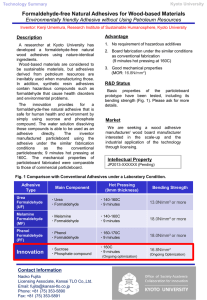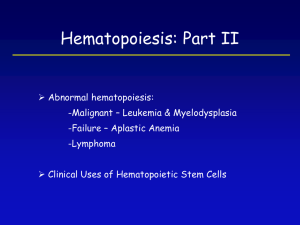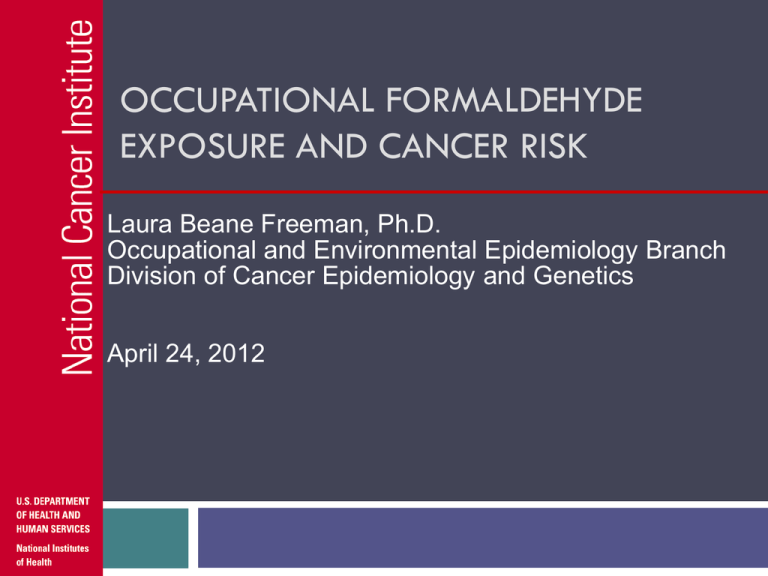
OCCUPATIONAL FORMALDEHYDE
EXPOSURE AND CANCER RISK
Laura Beane Freeman, Ph.D.
Occupational and Environmental Epidemiology Branch
Division of Cancer Epidemiology and Genetics
April 24, 2012
Formaldehyde: An Important Chemical
Ubiquitous in atmosphere and life forms
>5% of yearly U.S. GDP
2.1 million U.S. workers exposed (1995)
Fixatives and disinfectants
Wood products, resins, molded plastics, crease-resistant
fabrics, paper products
Environmental exposures
Off-gassing from home furnishings, automobile engines,
cigarette smoke, incomplete fuel combustion
Background: Evidence for Carcinogenicity
Genotoxic
Causes DNA-protein cross-links at site of contact
Inhaled formaldehyde causes nasal tumors in rats
3
Carcinogenicity of Formaldehyde
WHO-IARC review in 2004
WHO-IARC review in 2009
Sufficient evidence for leukemia, particularly myeloid
Reaffirmed status for nasopharyngeal cancer
National Toxicology Program Report on Carcinogens 2009
Sufficient evidence for nasopharyngeal cancer
Strong, but not sufficient evidence for leukemia
Sufficient evidence for nasopharyngeal cancer and myeloid leukemia
EPA ongoing
Updating risk assessment of formaldehyde
U.S. Occupational Standard
OSHA:
0.75 ppm for 8-h time weighted average
2.0 ppm for short-term exposure limit
Formaldehyde Research:
2 Exposure Scenarios
Study of Funeral Industry Workers
NCI Cohort of Industrial Workers
Leukemia among Professionals
PMR or SMR (Observed deaths)
Cause of Death
Author (year, region) # deaths
Time
HematoLeukemia Myeloid
period
lymphopoietic
leukemia
malignancies
Funeral Directors and Embalmers
Hayes (1990, USA)
4,046 1970-85
1.4* (115)
1.5* (51) 1.6* (24)
Walrath (1983, NY)
1,132 1925-80
1.2 (25)
1.4 (12) 1.5 (6)
Walrath (1984, CA)
1,007 1925.-80 1.2 (19)
1.8* (12) 1.5 (6)
Milham (1976, WA)
222 1950-71
1.9 (7)
3.0 (5)
NR
Levine (1984, Ontario)
319 1928-77
1.2 (8)
1.6 (4)
NR
Harrington (1975, UK)
Hall (1991, UK)
Matanoski (1989, USA)
Stroup (1986, USA)
* 95% CI does not include 1.0
Pathologists
156 1955-73
2.0* (8)
194 1974-86
1.4 (10)
3,644 1912-78
1.2 (64)
Anatomists
738 1888-79
1.2 (18)
0.6 (1)
1.5 (4)
1.7* (31)
NR
NR
NR
1.5 (10)
8.8* (3)
STUDY OF FUNERAL INDUSTRY
WORKERS
Case Control Study of
Funeral Industry Workers
6,808 deaths among 13,994 inactive/deceased
funeral directors/embalmers
Identified through professional associations and
licensing boards (deaths from 1960-86)
168 deaths from lymphohematopoietic malignancies
34 from myeloid leukemia
265 controls: deaths due to natural causes
Matched by study source, sex, dates of birth and death
Study of Funeral Industry Workers:
Exposure Assessment
1,278 interviews with next of kin and co-workers
Work history, including embalming characteristics
Per
job: start/end, funeral home, embalming, # embalmings
(autopsied/intact), ventilation
Per subject: duration of typical embalming, frequency of
spills
Smoking history
Study of Funeral Industry Workers:
Exposure Assessment
Exposure study
25
embalmings under controlled conditions
Ventilation
Solution
strength
Type of case (intact or autopsy)
Continuous
measurement of formaldehyde concentration
in breathing zone
Exposure levels:
Average
intensity while embalming: 1.7 ppm
8-hr time weighted average: 0.2 ppm
Peak exposure while embalming: 8.6 ppm
Cancer in the Funeral Industry: Results
Duration (y)
<500
embalmings <20
years
>20-34 years
>34 years
# of embalmings
<500
>500-1422
1423-3068
>3068
Hauptmann, et al., JNCI 2009
Non-lymphoid LHPM
OR
Myeloid Leukemia
OR
REF
0.3
2.0
2.6
p-trend=0.046
REF
0.5
3.2
3.9
p-trend=0.020
REF
0.6
1.8
2.3
p-trend=0.247
REF
1.2
2.9
3.0
p-trend=0.314
Cancer in the Funeral Industry: Results
Similar results for other metrics:
Myeloid leukemia:
Cumulative
exposure: p-trend=0.192
Average intensity while embalming: p=trend=0.058
TWA8 intensity: p-trend=0.396
Peak exposure: p-trend=0.036
No associations with other LHPM
NCI COHORT OF
INDUSTRIAL WORKERS
NCI Industrial Cohort Study
Mortality study of 25,619 workers in 10 plants
Employed
prior to 1966
Work histories through 1980
Time-dependent exposure metrics
13,951 deaths as of 2004
42 years of median follow-up
NCI Industrial Cohort: Relative Risks by
Peak Formaldehyde Exposure (ppm)
0
>0-<2.0
2.0-<4.0
>4.0
RR
RR
RR
RR
p-trend
Lymphohemato
1.07
1.0
1.17
1.37*
0.02
Leukemia
0.59
1.0
0.98
1.42
>0.50
Lymphatic
leukemia
0.27
1.0
0.81
1.15
>0.50
Myeloid
leukemia
0.82
1.0
1.30
1.78
0.13
Beane Freeman, et al., JNCI. 2009; 101: 751-761.
RR for Medium and High Peak
Formaldehyde Exposure Categories
`
Myeloid Leukemia
Exposure-response
trend p-values
0.50
0.25
0.00
Relative risk
10
MYL
RR for Peak
Medium
1
High
0.1
1960
17
Date of last work
history
1970
1980
1990
2000
Calendar year of end of follow-up
RR for Medium and High Peak
Formaldehyde Exposure Categories
0.50
0.50
Myeloid Leukemia
Lymphatic Leukemia
0.25
0.25
0.00
0.00
10
MYL
Relative risk
Relative risk
10
1
0.1
1960
1970
1980
1990
18
1
0.1
1960
2000
Calendar year of end of follow-up
LYL
RR for Peak
Medium
High
1970
1980
1990
2000
Calendar year of end of follow-up
RR for Medium and High Peak Formaldehyde Exposure Categories and pvalues for Trend Tests Among Exposed Person-years
All HLP
Multiple
Myeloma
NHL
Hodgkin
Lymphom
a
Leukemia
Lymphatic
Leukemia
Myeloid
Leukemia
RR for Medium and High Average Intensity Formaldehyde Exposure
Categories and p-values for Trend Tests Among Exposed Person-years
0.50
0.50
0.30
0.50
0.25
0.25
0.15
0.25
0.00
0.00
0.00
HLP
10
NHL
All HLP
NHL
0.00
MM
HDG
Relative risk
1
Hodgkin
Lymphoma
Multiple
Myeloma
0.1
1960
10
0.50
0.50
0.50
0.25
0.25
0.25
0.00
0.00
0.00
LYL
Lymphatic
Leukemia
LEU
Leukemia
MYL
Myeloid
Leukemia
1970
1980
1990
2000
1960
1970
1980
1990
2000
1960
1970
1980
1990
Calendar year of end of follow-up
1980
1990
2000
Relative risks for
average exposure:
Medium
High
1
0.1
1960
1970
2000
Nasopharyngeal Cancer
8 exposed cases
All
cases in highest peak exposure category:
RR=1.83, p-trend=0.044
Consistent with case-control studies of
nasopharyngeal cancer and animal studies
Hauptmann, et al., Amer J Epidemiol, 2004
Carcinogenicity of Formaldehyde
WHO-IARC review in 2004
WHO-IARC review in 2009
Sufficient evidence for leukemia, particularly myeloid
Reaffirmed status for nasopharyngeal cancer
National Toxicology Program Report on Carcinogens 2009
Sufficient evidence for nasopharyngeal cancer
Strong, but not sufficient evidence for leukemia
Sufficient evidence for nasopharyngeal cancer and myeloid leukemia
EPA ongoing
Updating risk assessment of formaldehyde


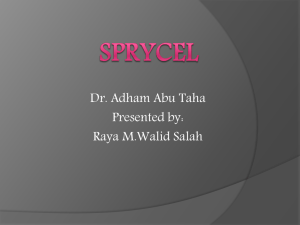
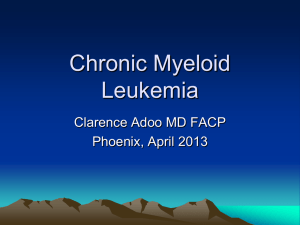

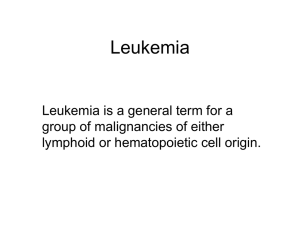
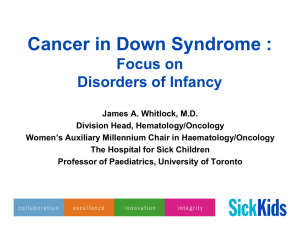
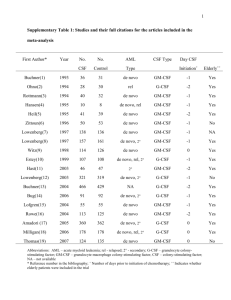
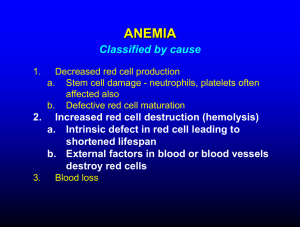
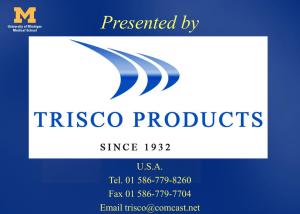
![Somerville, TN [Mission 6, Flight Experiment]](http://s2.studylib.net/store/data/005746272_1-a6373e623559b07d3c1bba38064dcd55-300x300.png)
